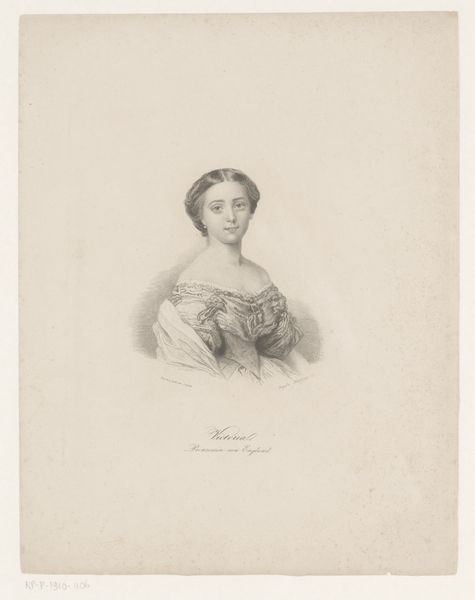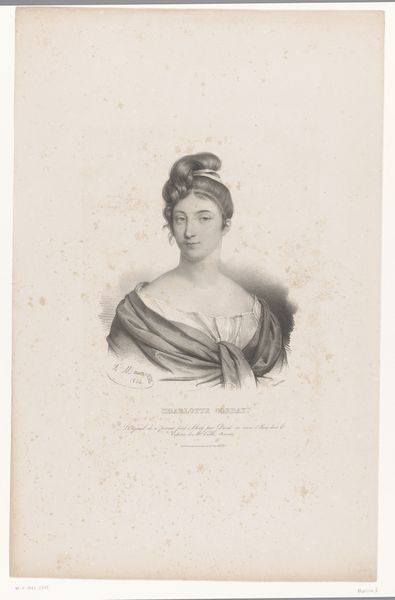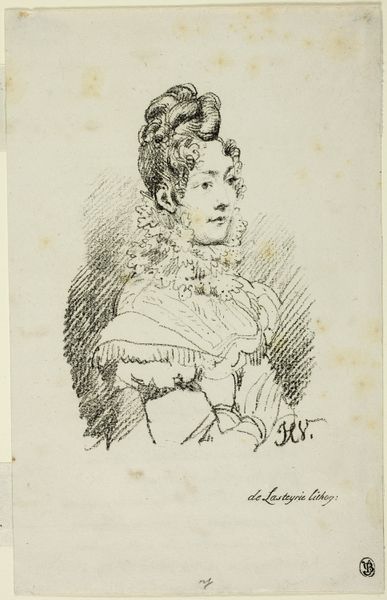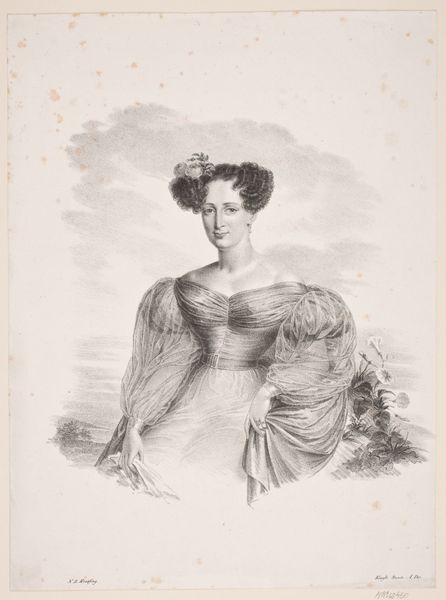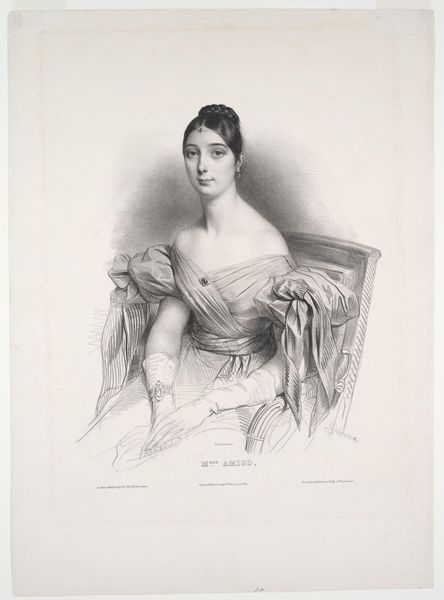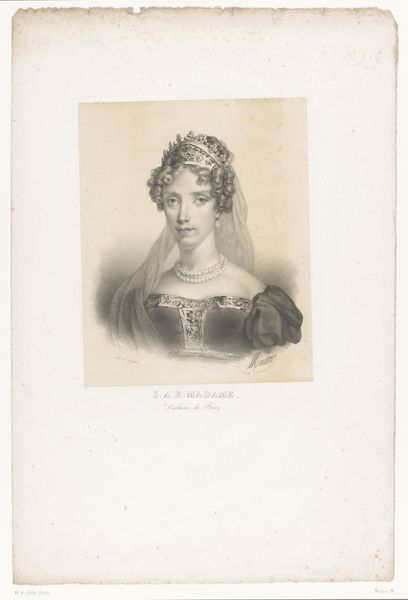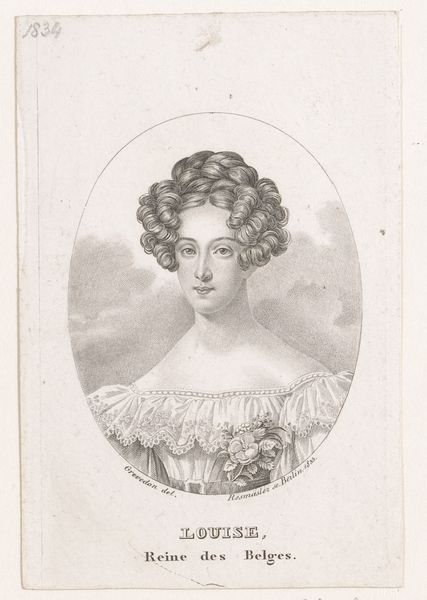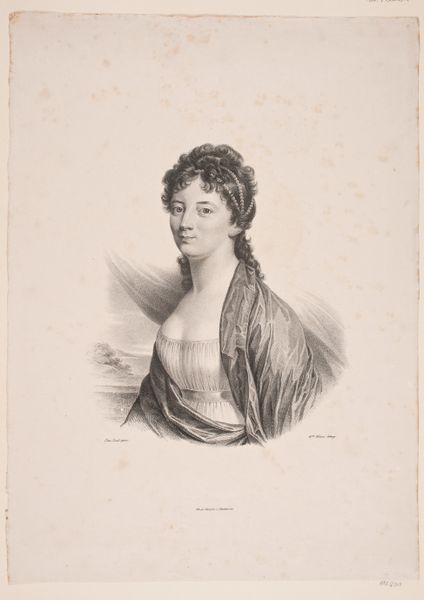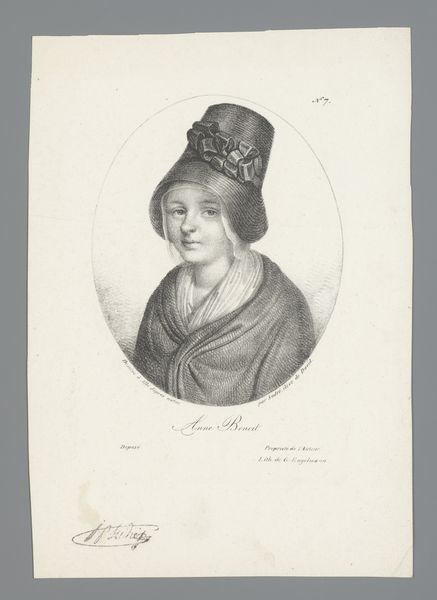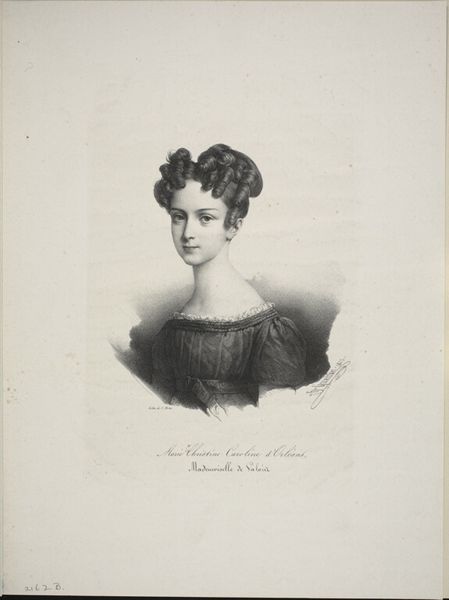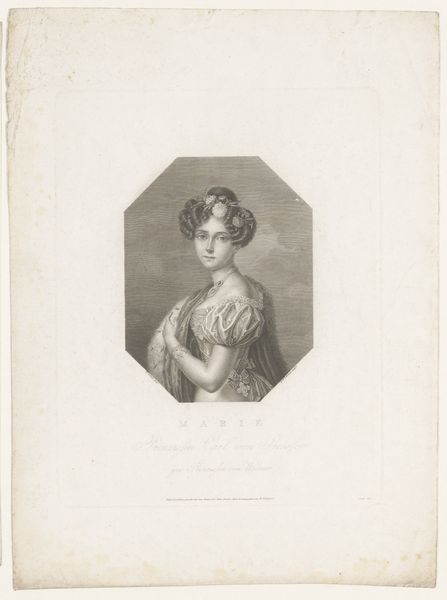
print, engraving
#
portrait
#
pencil drawn
# print
#
pencil sketch
#
figuration
#
pencil drawing
#
romanticism
#
engraving
Copyright: National Gallery of Art: CC0 1.0
Editor: So this print, "Lady Charlotte Susan Maria Bury," likely from 1837, is quite striking. It's delicate, a pencil drawing style printed as an engraving, almost like capturing a fleeting thought. What do you see in this portrait? Curator: Beyond a simple likeness, I perceive a study in the language of Romanticism. Note how the column implies classical virtues and stoicism. Consider how that offsets the softness of her gaze. What might the contrast between the architectural and the feminine signify in 1837? Editor: I guess it speaks to the complex roles expected of women at that time: strong, yet gentle; virtuous, but still aware of their own sensuality. Does the image suggest any particular narrative? Curator: Absolutely. The almost ethereal quality of the engraving hints at a world of feeling, where societal roles might become a stage for psychological dramas. It’s interesting how the technique mimics the period's sentimentalism. This feigned modesty serves as a theatrical construction for a woman active in court and literary circles. What emotional weight might this representation carry for viewers, both then and now? Editor: It definitely highlights how much appearances mattered, and how much effort went into constructing them, in that era. I wonder what Lady Charlotte herself thought of it. Curator: A wonderful question! It reminds us that portraits are not merely records, but potent symbols shaping, and perhaps distorting, memory. Editor: Thinking about this portrait as a symbol of constructed identity has given me a new perspective on portraiture. Thanks for sharing that insight. Curator: The pleasure was all mine. Perhaps you'll never look at another portrait the same way again, and recognize the depth of their silent language!
Comments
No comments
Be the first to comment and join the conversation on the ultimate creative platform.
